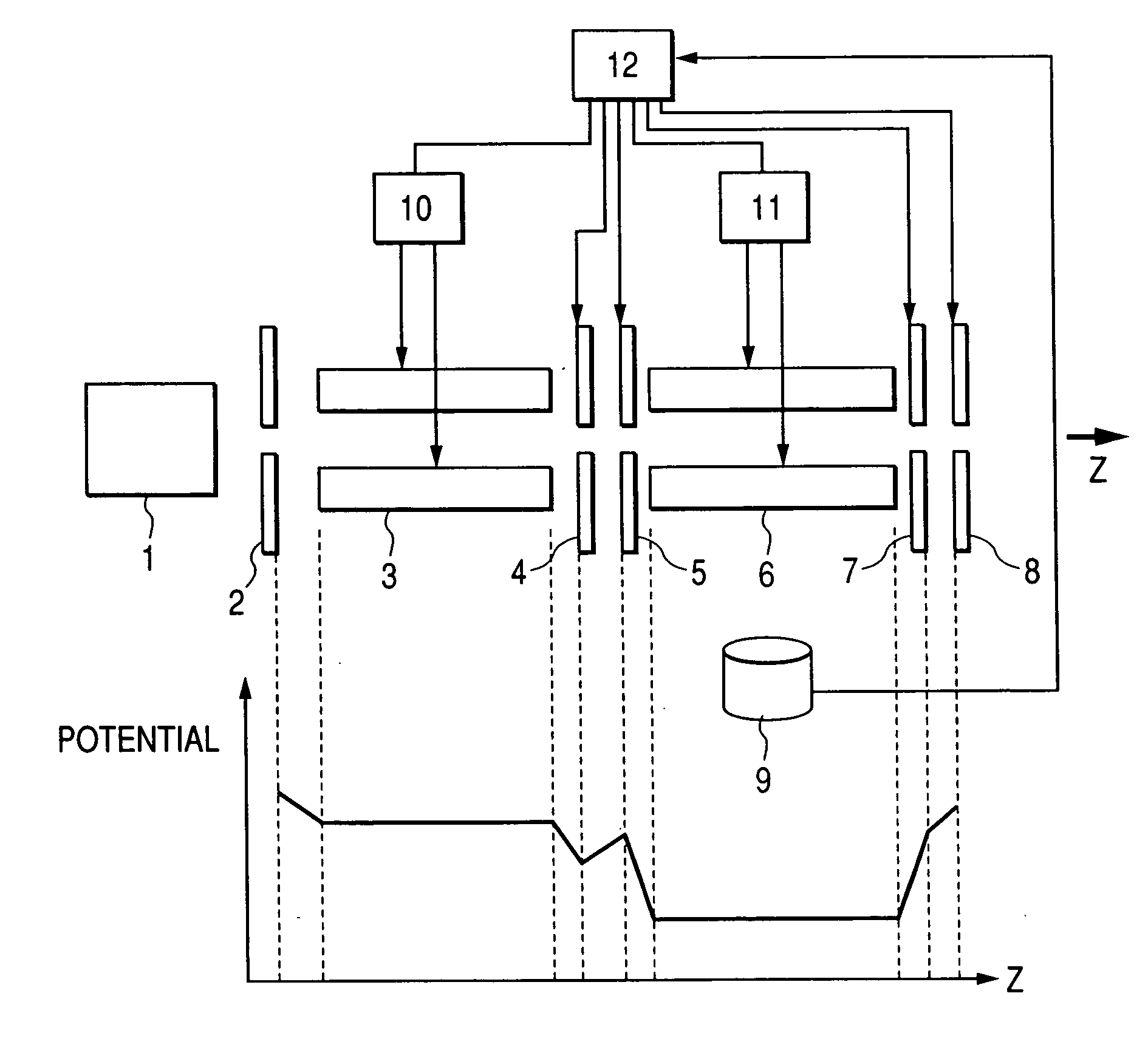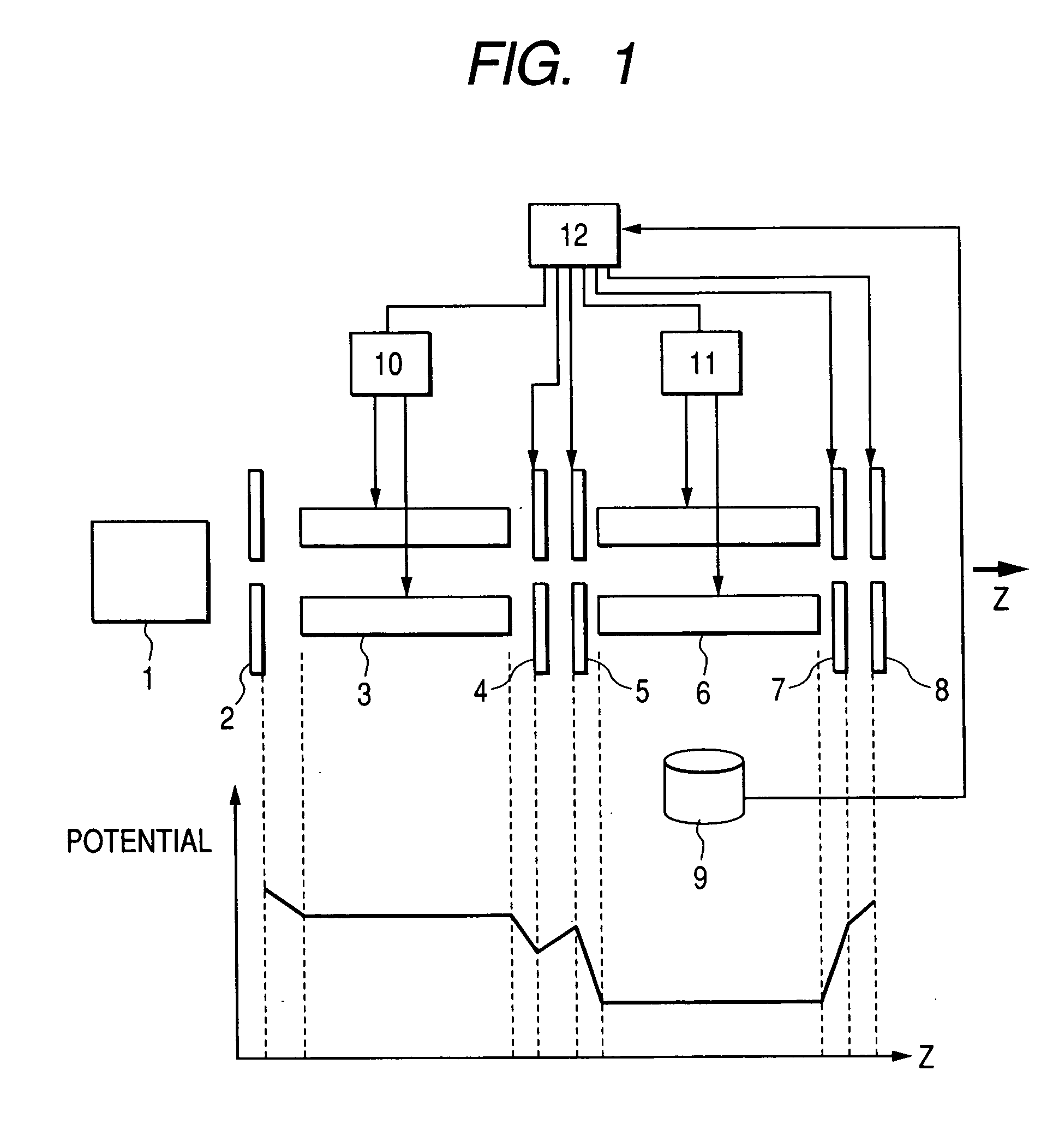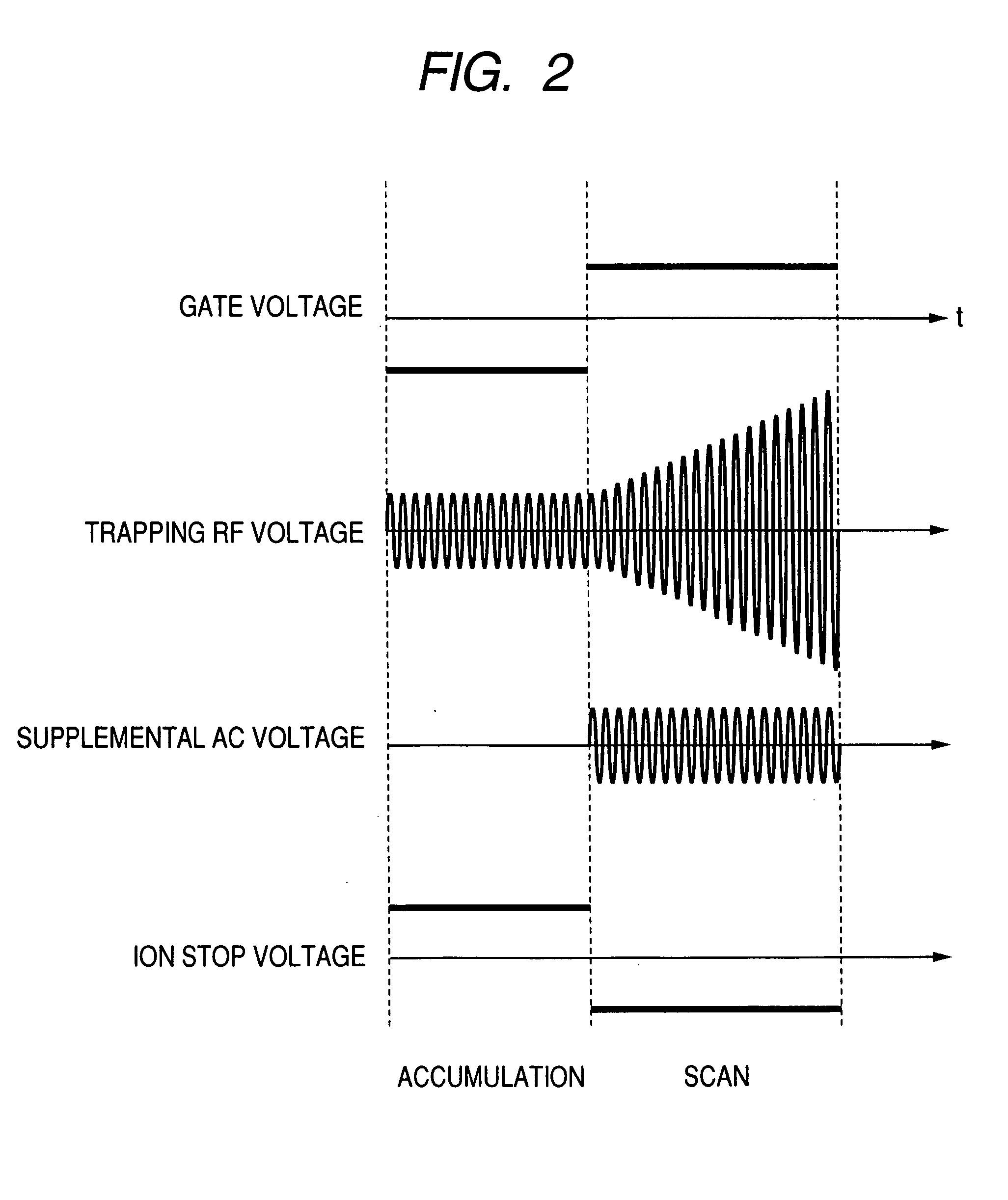Mass spectrometer
a mass spectrometer and mass spectrometer technology, applied in the field of mass spectrometers, can solve the problems of space charge, shortening the ion accumulation time, and reducing the duty cycle from 50% to 9%, so as to reduce the space charge and reduce the duty cycle. , the effect of high duty cycle and efficient suppression of space charg
- Summary
- Abstract
- Description
- Claims
- Application Information
AI Technical Summary
Benefits of technology
Problems solved by technology
Method used
Image
Examples
example 1
[0038]FIG. 1 is a view showing a constitutional example of a linear ion trap mass spectrometer of Example 1 according to the present invention. FIG. 1 shows, in the lower part, a potential for each of portions of a quadrupole mass filter and a linear ion trap near the center axis for z axis.
[0039] In FIG. 1, as an ion source 1 for ionizing a specimen to generate ions, one of ion sources of an electro spray ion source, an atmospheric pressure chemical ion source, an atmospheric pressure photo-ion source, or an atmospheric pressure matrix assisted laser desorption ion source is used. Ions generated from the specimen in the ion source 1 are passed through a not illustrated differential pumping region and an orifice 2 and introduced to a quadrupole mass filter comprising quadrupole rods 3.
[0040] An RF voltage at 1 MHz of about several tens V to several kV at the reversed phase is applied alternately to each of the quadrupole rods 3, and a DC voltage of several tens V to several kV is ...
example 2
[0070]FIG. 7 is a view showing a constitutional example of a linear ion trap mass spectrometer in Example 2 according to the invention. FIG. 7 shows, in the lower part, the potential for each of portions near the center axis of z axis of the quadrupole mass filter and the linear ion trap. Example 2 is different in that ions are mass selectively ejected in the axial direction with respect to example 1. Accordingly, the voltage on the ion stop lens 8 is set lower than the potential on the linear ion trap end lens.
[0071] As a buffer gas, inert He, Ar, N2, etc. are used and the pressure inside the linear ion trap is kept about at 10−2 Torr to 10−4 Torr for He, and about at 3×10−3 Torr to 3×10−5 Torr for Ar, and N2. Ions are cooled by collision with the buffer gas and converged on the center axis of the linear ion trap.
[0072] A DC bias at about 3V to 5V relative to the DC bias on the linear ion trap rod 6 is applied to the linear ion trap inlet lens 5 and the linear ion trap end lens 7...
example 3
[0076]FIG. 8 is a view showing a constitutional example of a linear ion trap mass spectrometer in Example 3 according to the invention. FIG. 8 shows, in the lower part, the potential for each of portions near the center axis of z axis of the quadrupole mass filter and the linear ion trap. An inserted lens 16 is inserted and a DC bias is applied to the linear ion trap rod 15, whereby a harmonic potential can be formed on the axis.
[0077] Example 3 has the constitution in which linear ion trap rods 15 are disposed instead of the linear ion trap rods 6 of Example 2 shown in FIG. 7 and the inserted lens 16 is interposed between the linear ion trap rods 15, and a linear ion trap power source 13 for supplying voltage to the linear ion trap rods 15 and a inserted lens power supply 14 for supplying voltage to the inserted lens 16 are disposed. The constitution of introducing the buffer gas into the region where the linear ion trap rods 15 are disposed and the pressure condition inside the l...
PUM
 Login to View More
Login to View More Abstract
Description
Claims
Application Information
 Login to View More
Login to View More - R&D
- Intellectual Property
- Life Sciences
- Materials
- Tech Scout
- Unparalleled Data Quality
- Higher Quality Content
- 60% Fewer Hallucinations
Browse by: Latest US Patents, China's latest patents, Technical Efficacy Thesaurus, Application Domain, Technology Topic, Popular Technical Reports.
© 2025 PatSnap. All rights reserved.Legal|Privacy policy|Modern Slavery Act Transparency Statement|Sitemap|About US| Contact US: help@patsnap.com



